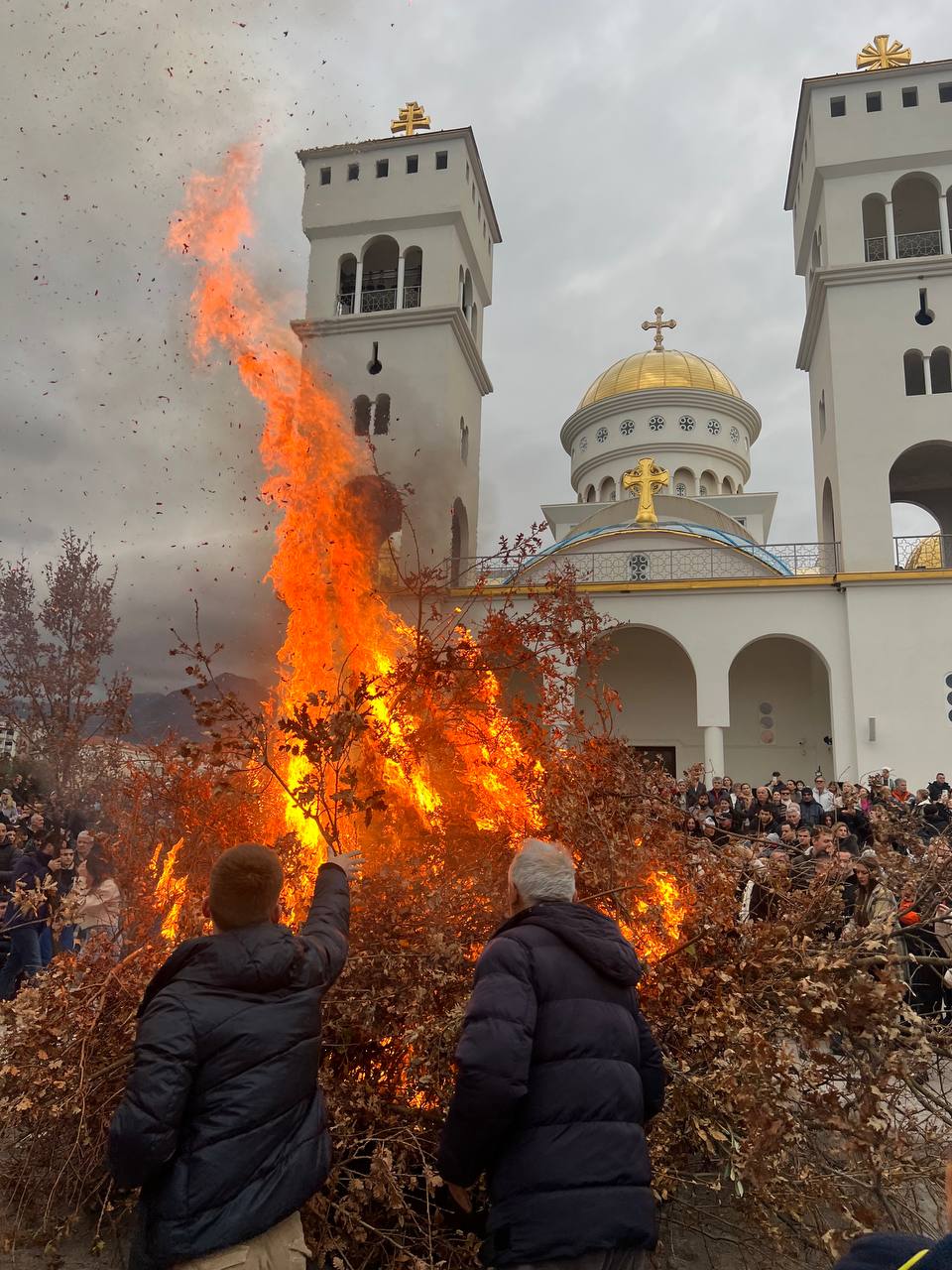In Montenegro, Christmas Eve, celebrated on January 6, is known as Badnji dan (Badnji dan) or Badnjak (Badnjak). It is one of the most significant and solemn days in the Montenegrin Orthodox tradition, preceding the celebration of Christmas.
The main symbol of this holiday is the badnjak, an oak log brought into the house at dawn by the men of the family. The badnjak symbolizes warmth, light, and fertility, and its burning represents the victory of light over darkness and the birth of Christ. According to tradition, the log is ceremoniously split, blessed, and then burned in the hearth.
In the city of Bar, as in the rest of Montenegro, the celebration involves the active participation of the entire community. A large badnjak may also be placed in a public square in front of a church, where a symbolic burning ceremony is held, often accompanied by church hymns, prayers, and blessings from the clergy.
Christmas Eve Dinner
On the evening of January 6, families gather for a fasting dinner rich in symbolism. The table typically includes dishes made from beans, fish, potatoes, dried fruits, and bread. A common traditional dish is česnica, a fasting bread with a coin baked inside. It is believed that whoever finds the coin will enjoy happiness and prosperity in the coming year.
Rituals and Customs
On Badnji dan, great importance is placed on observing ancient rituals. In the morning, families attend a church service and then go to collect the badnjak. Some residents of Bar participate in traditional festivities, including singing carols, lighting bonfires, and enjoying the holiday spirit.
A special focus of this day is the unity of the family. Badnji dan emphasizes the importance of family bonds and Christian faith. People also make efforts to reconcile disputes and mend relationships before Christmas.
Today, Badnji dan in Bar retains its ancient customs while embracing new elements. Street markets are held in the city center, where visitors can purchase traditional crafts, sweets, and souvenirs. Many residents and tourists gather at churches and public squares to participate in collective rituals and immerse themselves in the festive atmosphere.
The celebration of Badnjak is not only a tribute to the past but also a vibrant example of how Montenegrins honor their traditions, filling them with warmth, joy, and spiritual meaning.



